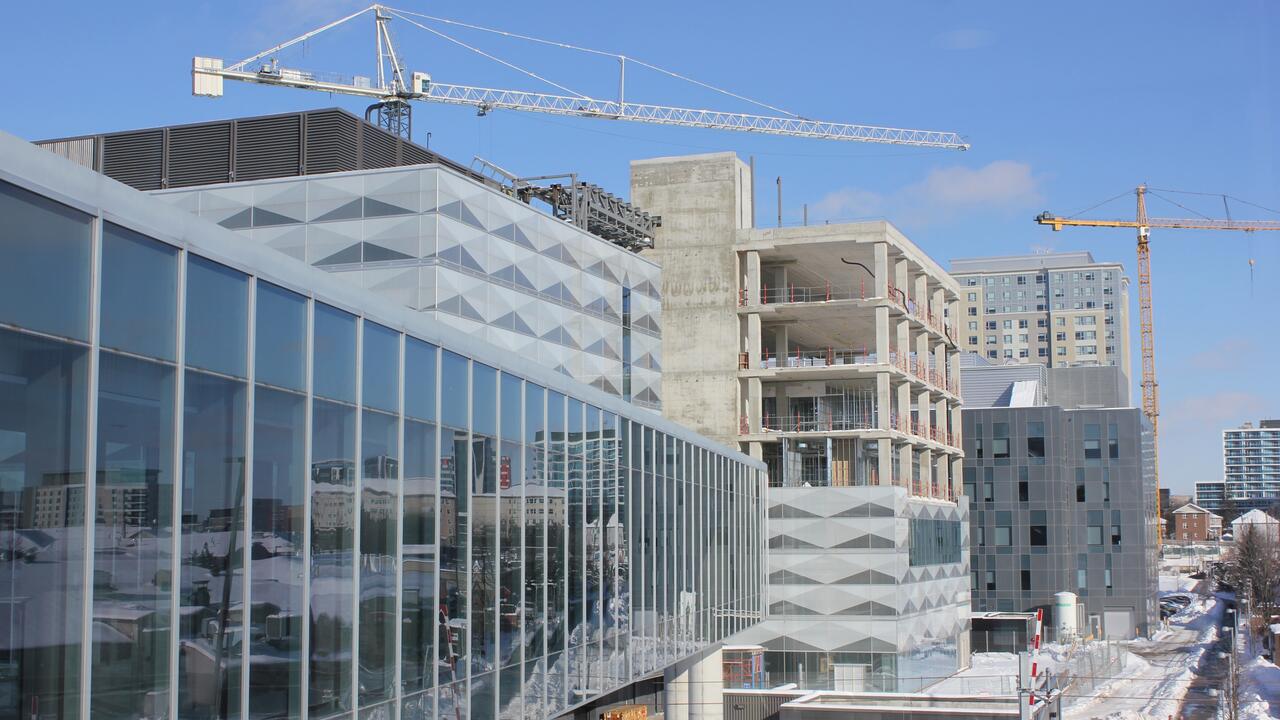
$32.6 million in federal funding announced for E7 building
The federal government contributes $32.6 million in funds to Waterloo Engineering under a program to update research and innovation infrastructure

The federal government contributes $32.6 million in funds to Waterloo Engineering under a program to update research and innovation infrastructure
By Brian Caldwell Faculty of EngineeringA long round of applause followed the formal announcement in mid-January of a $32.6-million contribution from the federal government towards construction of the state-of-the-art Engineering 7 building at the University of Waterloo.
Cabinet minister Bardish Chagger shared the good news after touring a Waterloo Engineering laboratory doing work in the areas of cybersecurity and autonomous vehicles, the kind of innovative research that will be expanded in the new, seven-storey, 240,000-square-foot building on the east campus.
“Ladies and gentlemen, I’m staying tuned because I know what this funding will deliver,” said Chagger, the Waterloo MP who serves as both Government House Leader and the Minister of Small Business and Tourism.
With the federal commitment, plus $10 million in funding from the University itself and $36.5 million so far from private-sector donors, the focus at Waterloo Engineering is on raising the final $8 million in its Educating the Engineer of the Future campaign.
Now under construction, on budget and on track for completion in the spring of 2018, Engineering 7 will be home to growing biomedical and mechatronics programs, as well as research on disruptive technologies including machine intelligence, mobile robotics, autonomous vehicles and wearable biomedical devices.
“It will be the flagship of Waterloo Engineering and a state-of-the-art research and innovation hub,” Dean Pearl Sullivan told a few hundred people gathered in the Sedra Student Design Centre.
Engineering 7 will be one of the largest buildings on campus, featuring a soaring atrium and enclosed pedestrian bridges linking it to Engineering 5. One focal point will be the Engineering Ideas Clinic, where hands-on learning will be used to help teach theoretical concepts.
It will also include 40 research labs, including a cutting-edge additive manufacturing (3D printing) lab and a unique facility called RoboHub for testing aerial, mobile and magnetically levitated robots, plus seven lecture halls and 20 student-design garages.
Feridun Hamdullahpur, the president and vice-chancellor of the University, joked that Chagger, an alumna, is always welcome on campus.
“We like it more when there is an announcement and we like it limitlessly more when that announcement comes with money, so it’s fantastic,” he said. “Please do come back as often as you can.”

Read more
Here are the people and events behind some of this year’s most compelling Waterloo stories

Read more
Meet five exceptional Waterloo graduate students crossing the convocation stage as Class of 2025 valedictorians

Read more
Waterloo Engineering alum wears her iron ring proudly while building her career in quantum tech in Germany
The University of Waterloo acknowledges that much of our work takes place on the traditional territory of the Neutral, Anishinaabeg, and Haudenosaunee peoples. Our main campus is situated on the Haldimand Tract, the land granted to the Six Nations that includes six miles on each side of the Grand River. Our active work toward reconciliation takes place across our campuses through research, learning, teaching, and community building, and is co-ordinated within the Office of Indigenous Relations.